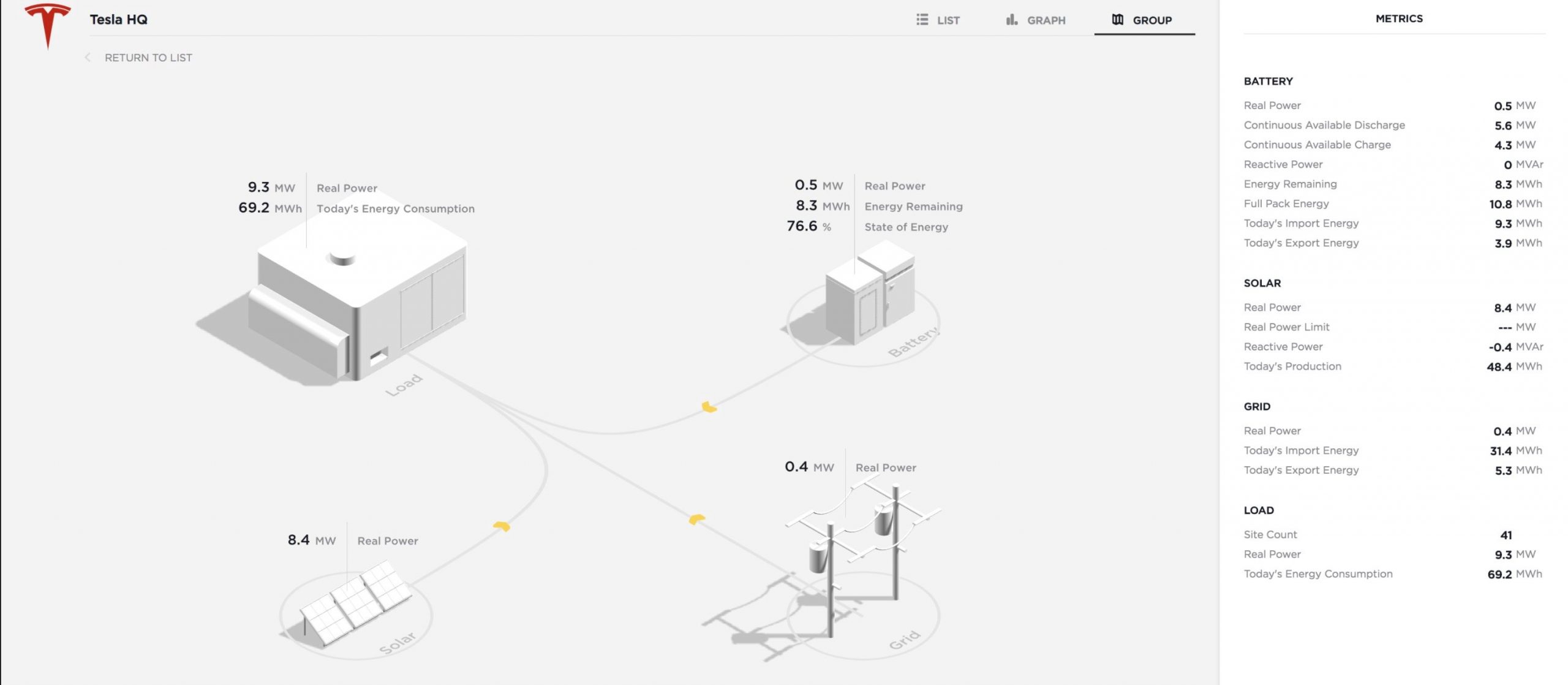Today, we take a look at Tesla Powerhub, a lesser-known Tesla energy product to monitor and control energy assets at a large scale.
Tesla’s well-known energy products are the Powerwall, Powerpack, Megapack, solar panels and solar roof.
Earlier this year, we also learned of Autobidder, Tesla’s platform to autonomously monetize battery assets.
But this new product is not alone in Tesla’s suite of energy software products.
This week, I was reading a job opening at Tesla that listed all the company’s energy products and one them that I’ve never heard up before caught my eye:
“Want to engineer rich user experiences that power our Megapack, Powerpack, Powerwall, Tesla Solar, Solar Roof, Powerhub, and Autobidder products?”
Powerhub?
So I did some digging and find out more about it. I thought I’d share what I found with Electrek readers
Tesla Powerhub
Powerhub was first mentioned as part of Tesla’s launch of the Megapack, its biggest stationary energy storage product to date.
Tesla describes the product:
“Powerhub is an advanced monitoring and control platform for managing distributed energy resources, renewable power plants and microgrids. Powerhub is deployed and in use across Tesla’s fleet of over one gigawatt-hour of operating commercial sites. Customers ranging from facility managers to power plant operators use Powerhub to maximize operational efficiency, uptime and asset value. Powerhub covers all common elements of Supervisory Control and Data Acquisition (SCADA) systems and offers standard customizations to meet the operational needs of small, large and virtual power plants.”
Here are a few screenshots of the Tesla Powerhub interface:
With Powerhub, Tesla customers can manage many different energy assets including solar, storage and select non-Tesla assets (generators, breakers, transformers) on a single interface.
On top of providing data, Tesla says that customers can also use Powerhub to control their assets and perform tasks like:
- Setting quiet hours for microgrid operation
- Configuring preferred set points for frequency/watt control
- Scheduling future dispatch for providing aggregate demand response
Tesla also has an API for Powerhub so that customers can program their own controls of the assets.
Here are Colin Breck and Percy Link , two Tesla software engineers who worked on the platform, describing Tesla Powerhub:
“For industrial customers, the software platform supports products like power pack and megapack for large scale energy storage, as well as industrial-scale solar. Software platforms like PowerHub allows customers to monitor the performance of their systems in real-time or inspect historical performance over days, weeks, or even years. Now, these products for solar generation, energy storage, transportation, and charging, all have an edge computing platform. Zooming in on that edge computing platform for energy, it’s used to interface with a diverse set of sensors and controllers, things like inverters, bus controllers, and power stages.
It runs a full Linux operating system and provides local data storage, computation, and control, while also maintaining bi-directional streaming communication with the cloud over WebSocket so that it can regularly send measurements to the cloud for some applications as frequently as once a second. It can also be commanded on-demand from the cloud. Now, we’ll mention a few things throughout the presentation about this edge computing platform, but our main focus is going to be on that cloud IoT platform.”
Tesla Powerhub can also integrate with Autobidder and allow people to monetize their assets on the energy market.
Between these two products, and Tesla’s venture into energy plans for customers using its product, the company slowly becoming a distributed electric utility – something CEO Elon Musk said was a goal for the automaker.
Last year, Musk said that Tesla Energy, the energy division of the automaker, is becoming a distributed global utility, and it could even outgrow its automotive business.
FTC: We use income earning auto affiliate links. More.
Subscribe to Electrek on YouTube for exclusive videos and subscribe to the podcast.
